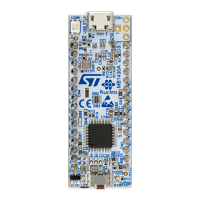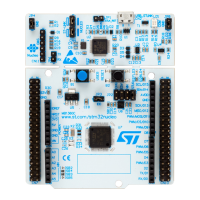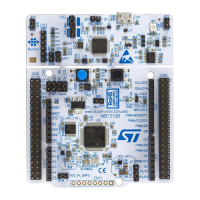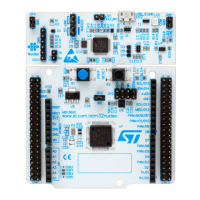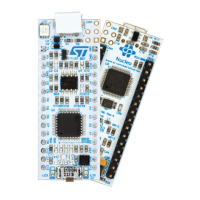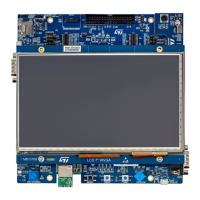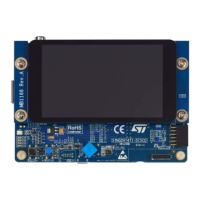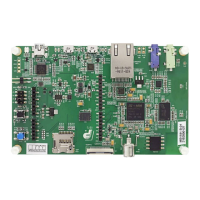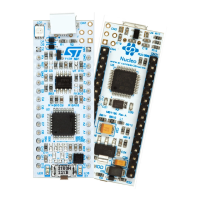• Place the JP8 jumper on [2-3] to supply the MCU VREF+ with VDD
6.6.4 Current consumption measurement (IDD)
Jumper JP6, labeled IDD, is used to measure the STM32G4 microcontroller consumption by removing the jumper
and by connecting an ammeter:
• JP6 ON: STM32 is powered with 3V3 voltage (default)
• JP6 OFF: an ammeter must be connected to measure the STM32G4 current. If there is no ammeter, the
STM32 is not powered.
To get a correct and complete current consumption of the STM32G4, jumper JP8 must be set to [2-3] to supply
the MCU VREF+ with VDD, otherwise, the current consumption at pin VREF+ is not taken into account in the IDD
(through jumper JP6).
6.6.5 Virtual COM port (VCP): LPUART and USART
The STM32G4 Nucleo-64 board offers the possibility to connect an LPUART or a USART interface to the
STLINK-V3E, Arduino
™
Uno V3 connector (CN9 pins 2 and 1), or ST morpho connector (CN10 pins 35 and 37).
The selection is done by setting the related solder bridges as detailed in Table 10 and Table 11.
Table 10. USART1 connection
Solder bridge configuration
(1)
Feature
(1)
SB13, SB19: ON
SB12, SB20, SB18, SB22: OFF
USART1 (PC4/PC5) connected to Arduino
™
(D1 & D0) and
ST morpho connector (CN10 pin 35 & 37).
SB12, SB20: ON
SB13, SB19, SB17, SB23: OFF
USART1 (PC4/PC5) connected to STLINK-V3E Virtual COM
port.
1. The default configuration is shown in bold
Table 11. LPUART1 connection
Solder bridge configuration
(1)
Feature
(1)
SB17, SB23: ON
SB18, SB22, SB12, SB20: OFF
LPUART1 (PA2/PA3) connected to STLINK-V3E Virtual
COM port.
SB18, SB22: ON
SB17, SB23, SB13, SB19: OFF
LPUART1 (PA2/PA3) connected to Arduino
™
(D1 & D0) and
ST morpho connector (CN10 pin 35 & 37).
1. The default configuration is shown in bold
By default:
• Communication between the target STM32G4 and the STLINK-V3E MCU is enabled on LPUART1 to
support the Virtual COM port
• Communication between the target STM32G4 and Arduino
™
(and ST morpho) connectors is enabled on
USART1
6.7
Solder bridges
All 41 solder bridges are located on the bottom layer of the STM32G4 Nucleo-64 board.
UM2505
Solder bridges
UM2505 - Rev 2
page 24/43
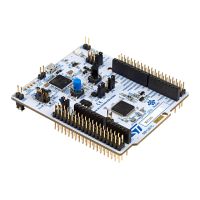
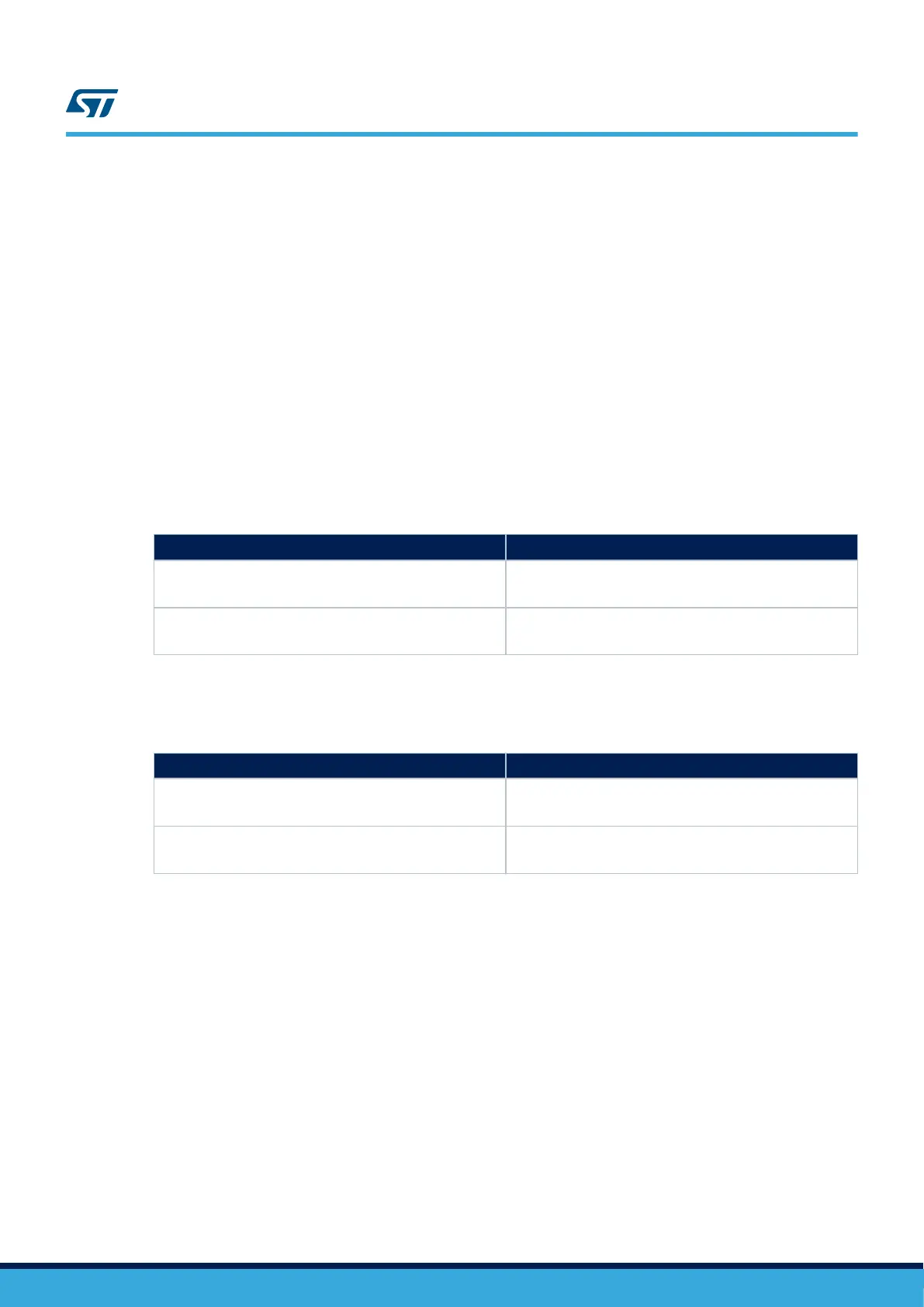